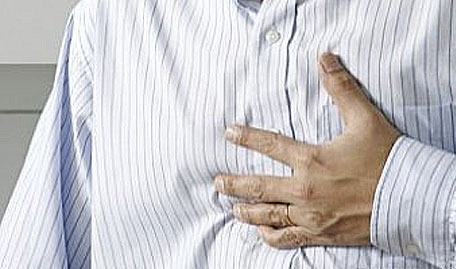
A leading cardiac specialist has said some patients who suffer suspected heart attacks could be receiving inappropriate investigations and unnecessary treatment due to a 'flawed' blood test.
A blood test which measures levels of troponin in the bloodstream is carried out when a person is suspected of suffering from a heart attack to rule out or confirm the diagnosis.
However, a study of 20,000 consecutive patients at University Hospital Southampton NHS Foundation Trust, who had blood tests for any reason and were being treated for unrelated conditions, found that one in 20 had levels consistent with those seen in heart attack patients, even though there was no suspicion of a heart attack.
The results, published by The BMJ, showed levels of troponin also differed according to other factors such as age, sex and whether an inpatient or outpatient.
Interpreting results
“This study shows the need for medical staff to interpret troponin levels carefully in order to avoid misdiagnosis of a heart attack and inappropriate treatment,” explained Professor Nick Curzen, a consultant cardiologist at UHS and CHARIOT study lead.
“It tells us that the upper limit of normal for the troponin test, which is derived from a group of relatively healthy people, may not be suitable for a hospital population in general.
“This is of significant concern because if it is measured in patients without a classic heart attack presentation, the level may appear raised and such patients may end up being incorrectly diagnosed as having had a heart attack.
"They may then receive inappropriate treatment which could be potentially harmful outside of this context.”
Diagnosing heart attack
The level of troponin indicating a heart attack was originally determined by measuring it in the blood of healthy people between 18 and 40 years old.
People recording results in the highest 1% are considered to have abnormally high levels and, in the appropriate clinical circumstances, it would indicate a heart attack.
The study, carried out between 29 June and 24 August 2017, showed that 39% of all patients from the critical care units, 14% of all medical inpatients and 6% of all patients from the emergency department had a troponin concentration greater than the level that indicates a heart attack.
Prof Curzen added: “The results can be used to stimulate debate about the way troponin measurements are requested and interpreted in the future because it is certainly not quite right at the moment.”
Next steps
The study team now wish to look at one-year outcomes and readmission rates of CHARIOT study participants, to see whether the test can predict future events. This would allow researchers to use the test in the future to identify the groups who are at higher risk of having a cardiac event, and better target further care.
For more information about this, or should you wish to withdraw your data from the study, please contact the coronary research group on 023 8120 8538 or email jonathan.hinton@uhs.nhs.uk.
Alternatively, you can write to: Coronary Research Group, Cardiovascular and Thoracic Unit, Southampton General Hospital, Tremona Road, Southampton SO16 6YD.
Posted on Tuesday 19 March 2019